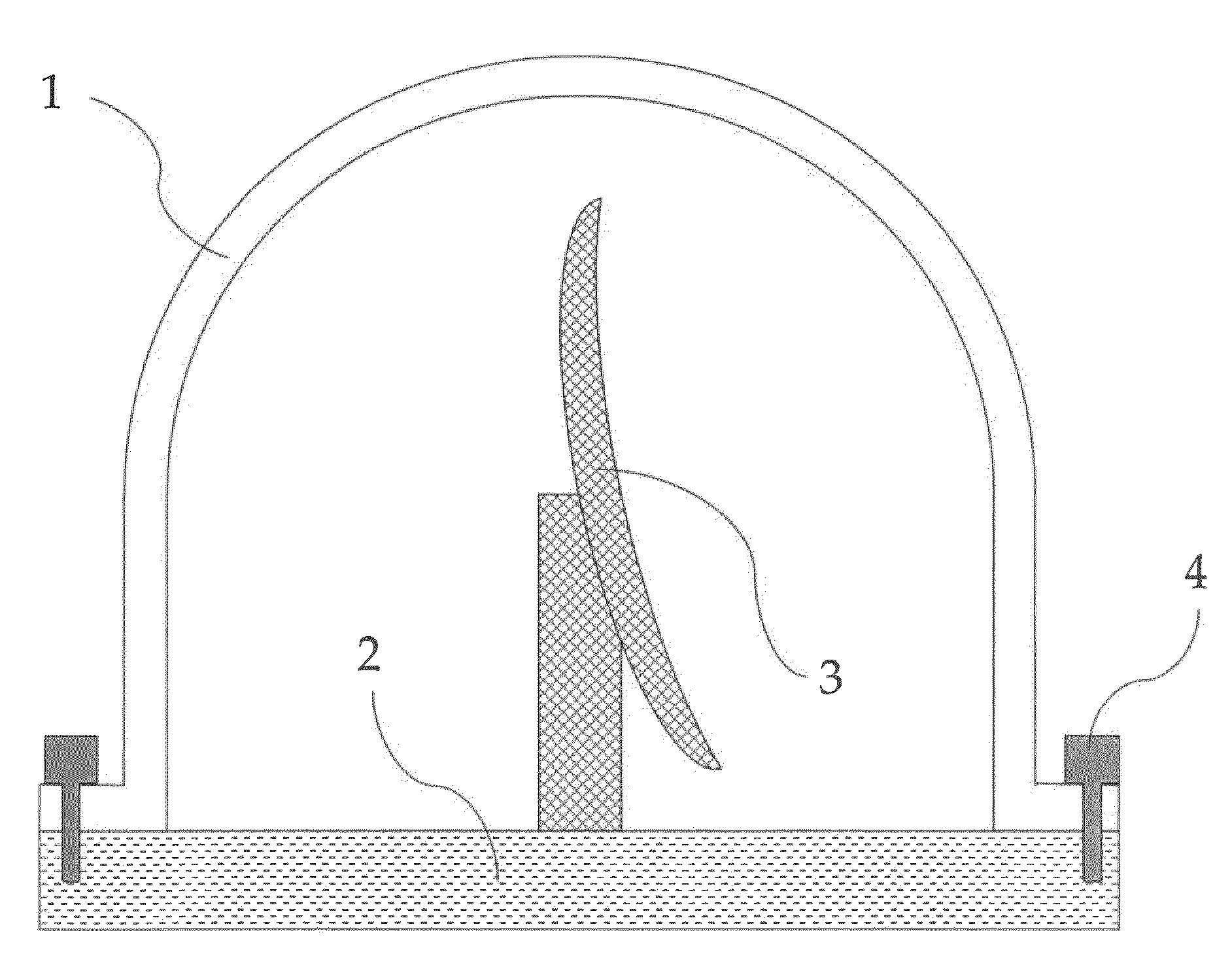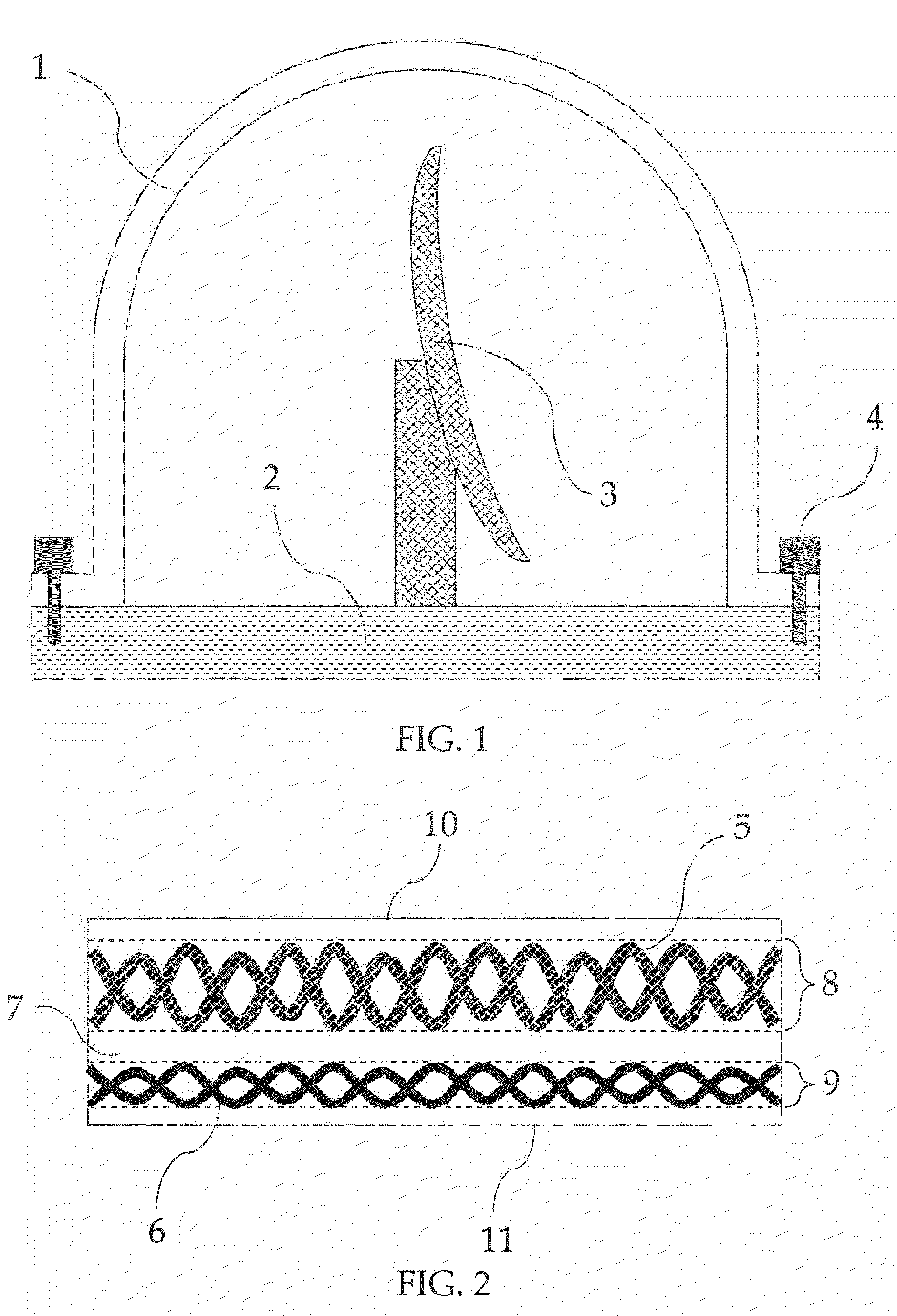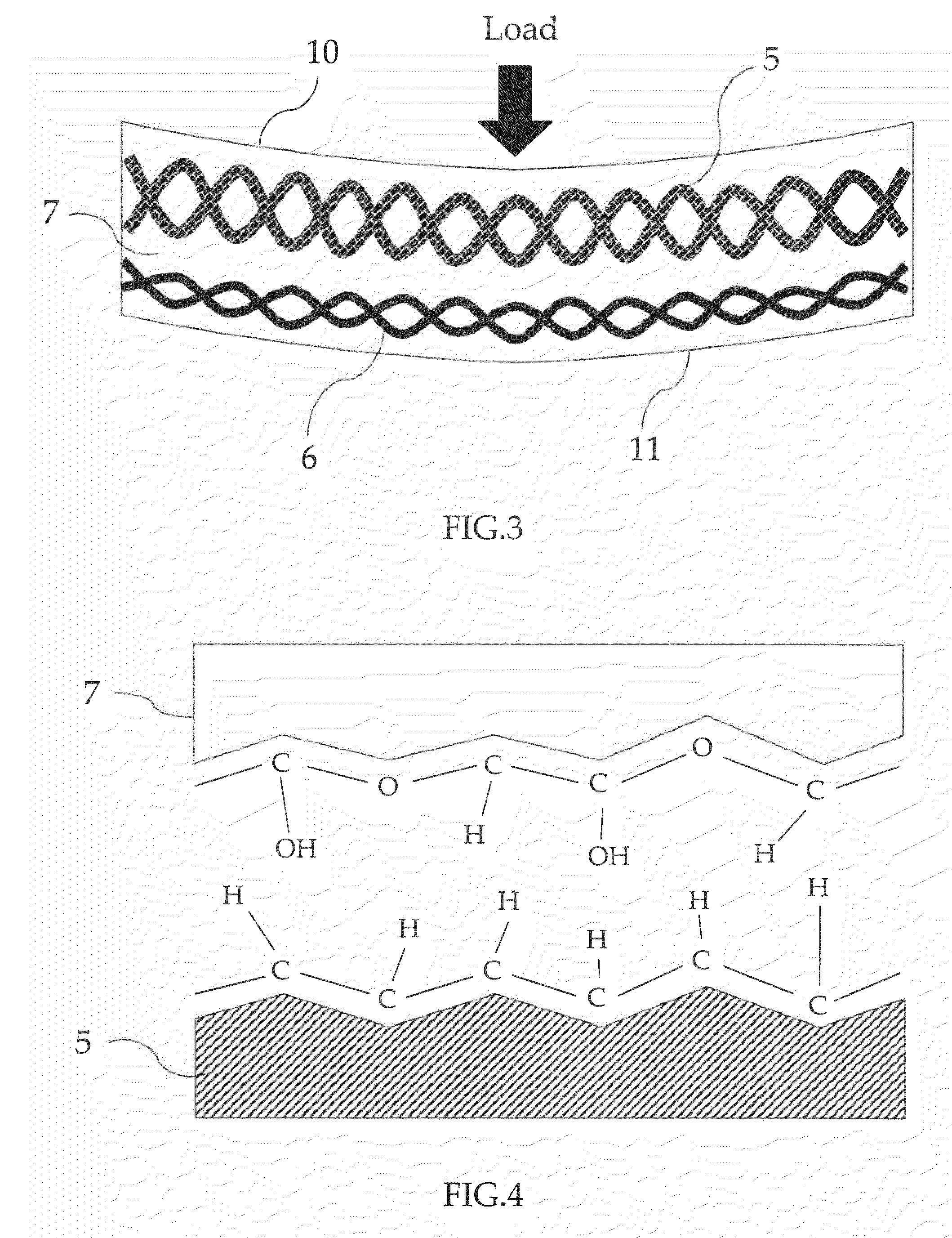Radome and method of producing the same
a technology of radome and radome, which is applied in the direction of envelope/bag making machinery, paper/cardboard containers, pedestrian/occupant safety arrangements, etc., can solve the problems of increased radio wave transmission loss, easy plastic deformation of radome using such a material, slippery interface between organic fiber and matrix, etc., and achieves excellent radio wave transmission loss and structural strength, easy production, and favorable workability
- Summary
- Abstract
- Description
- Claims
- Application Information
AI Technical Summary
Benefits of technology
Problems solved by technology
Method used
Image
Examples
embodiment 1
FIG. 1 is a view for explaining a radome according to this embodiment. In FIG. 1, a radome 1 is fixed to a base 2 with fixing screws 4, and a radio wave device 3 containing an antenna is disposed inside the radome 1.
The radome 1 protects the radio wave device 3 from the outside environment (e.g., natural environment such as wind, sunlight, rain, and seawater, impact from the outside, and dust). When a radio wave is received / transmitted between the outside and the antenna, the radio wave passes through the radome 1. Here, although the shape of the radome 1 may be suitably determined, if the radio wave device 3 moves, the radome 1 must be structured in such a manner that it does not interfere with the radio wave device 3. Moreover, the radome I is disposed in such a manner that the distance from the central part of the antenna to the radome 1 is as equal as possible in the direction of the output radio wave of the antenna and that a radio wave enters perpendicular to the radome 1.
In o...
embodiment 2
FIG. 6 is an enlarged cross sectional view illustrating a part of a radome 1 according to this embodiment. Since the essential parts of the radome 1 of this embodiment are the same as those of the radome 1 of Embodiment 1, only different parts from those of the radome 1 of Embodiment 1 will be described. In FIG. 6, the radome 1 is formed of a substance in which the olefin woven material 5 and the glass cloth 6 have been impregnated with the matrix resin 7 and are integrated with each other. Two pieces of glass cloth 6 are disposed at the outer side and at the inner side of the radome respectively. Between the two pieces of glass cloth 6, the olefin woven material 5 is disposed. A portion where the olefin woven material 5 has been impregnated with the matrix resin 7 forms the olefin woven material-containing area layer 8, and a portion where the glass cloth 6 has been impregnated with the matrix resin 7 forms the glass cloth-containing area layer 9. Further, the outside environment i...
example 1
NE-Glass (glass cloth, thickness: 0.16 mm) was disposed in an inner mold, and a woven material (olefin woven material, thickness: 0.63 mm) using an ultrahigh molecular weight polyethylene fiber was laminated thereon. Next, the NE-Glass and the woven material were covered with a mold releasing film, and the space between the periphery part of the mold releasing film and the inner mold was sealed in such a manner as to maintain airtightness. Thereafter, a mixture of vinyl ester resin (matrix resin, Repoxy R7070, manufactured by Showa High Polymer Co., Ltd.) and a curing agent (organic peroxide, PERMEK N, manufactured by NOF CORPORATION) was injected in the inner mold through a resin inlet port preformed on the inner mold while evacuating the space between the mold releasing film and the inner mold for impregnation. Here, 1 part by weight of the curing agent was used based on 100 parts by weight of vinyl ester resin. Next, the resultant was heated at 100° C. for 120 minutes to cure the...
PUM
| Property | Measurement | Unit |
|---|---|---|
| dielectric constant | aaaaa | aaaaa |
| dielectric constant | aaaaa | aaaaa |
| dielectric constant | aaaaa | aaaaa |
Abstract
Description
Claims
Application Information
 Login to View More
Login to View More - R&D
- Intellectual Property
- Life Sciences
- Materials
- Tech Scout
- Unparalleled Data Quality
- Higher Quality Content
- 60% Fewer Hallucinations
Browse by: Latest US Patents, China's latest patents, Technical Efficacy Thesaurus, Application Domain, Technology Topic, Popular Technical Reports.
© 2025 PatSnap. All rights reserved.Legal|Privacy policy|Modern Slavery Act Transparency Statement|Sitemap|About US| Contact US: help@patsnap.com



